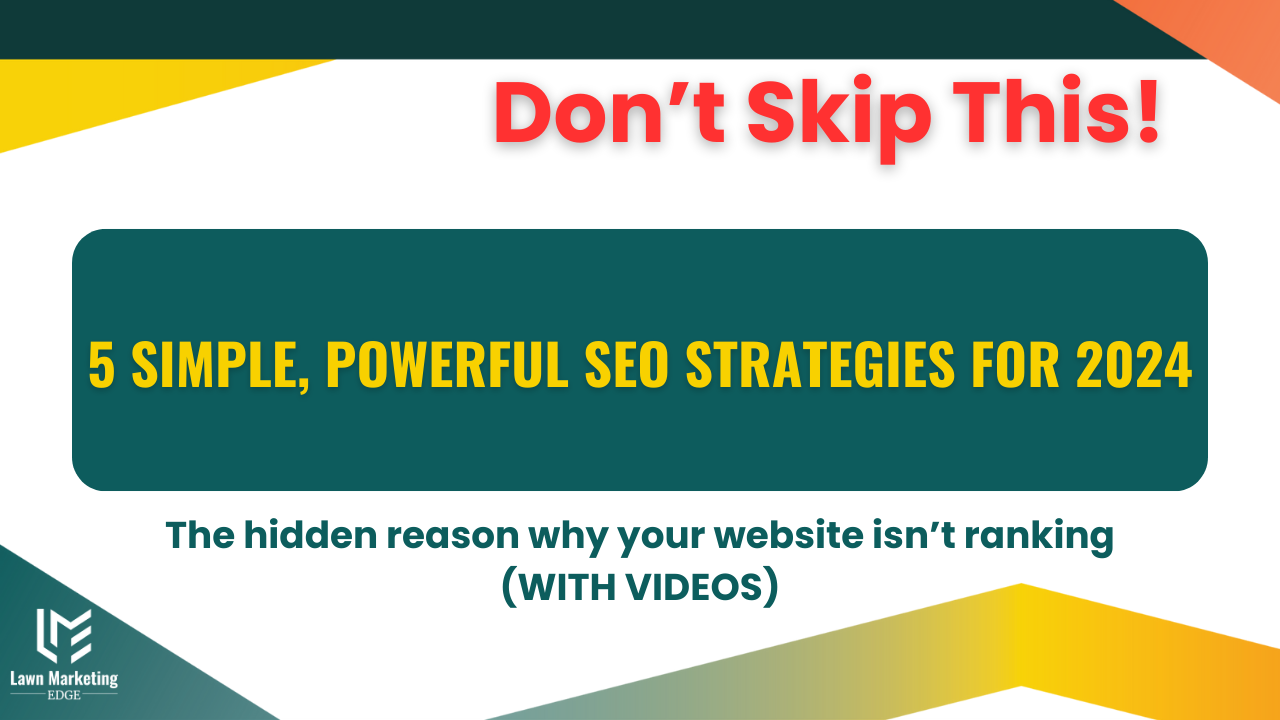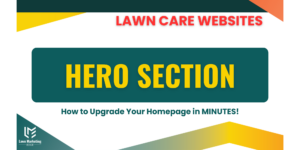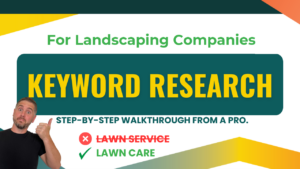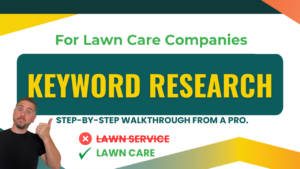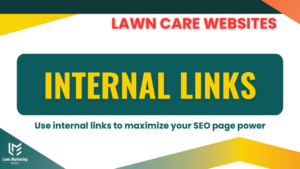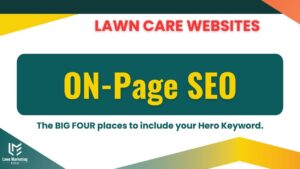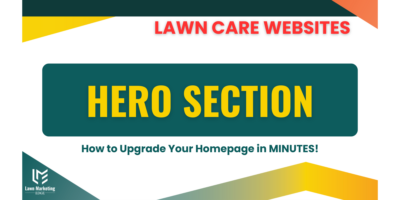Lawn & Landscape SEO 2024
The 2024 lawn/landscape season is just around the corner, and the time to take some SEO action is ASAP to be in a position to maximize your business.
SEO remains one of the most effective local lead-generation marketing strategies available. It works because you are getting your marketing in front of a customer that is actively looking for the exact solution you provide.
The below advice isn’t theory. It’s time-tested over hundreds of campaigns and thousands of keywords.
These 5 simple strategies can move you from Pages 2-4 to page one in less than 30 days. We’ve seen it happen hundreds of times.

This guide assumes:
- You have an existing website.
- You have some ability to edit that site.
If you don’t have either of these, you may want to check out our Lawncare Website Design Guide.
The recommendations in this doc are backed by 12+ years of SEO experience with over 1000, #1 keyword generated and daily monitoring over 10,000 keywords. A portion of SEO is always changing and learning, but this guide is going straight to the value that can serve you for years. Bookmark this.
If you take the actions recommended in this guide, I can nearly guarantee that your site is going to be in a better position to gain some of your local leads and traffic—potentially a LOT more.
Step 1: Pick one Keyword to target per page. (Hero Keywords)
Every successful SEO strategy begins with focus.
You must assess your current website pages and designate a “HERO Keyword” group for each page. Map out your site, even with a pen and paper, to designate which pages of your site you want to rank for which keywords. The homepage can’t and won’t rank for all of your keywords.
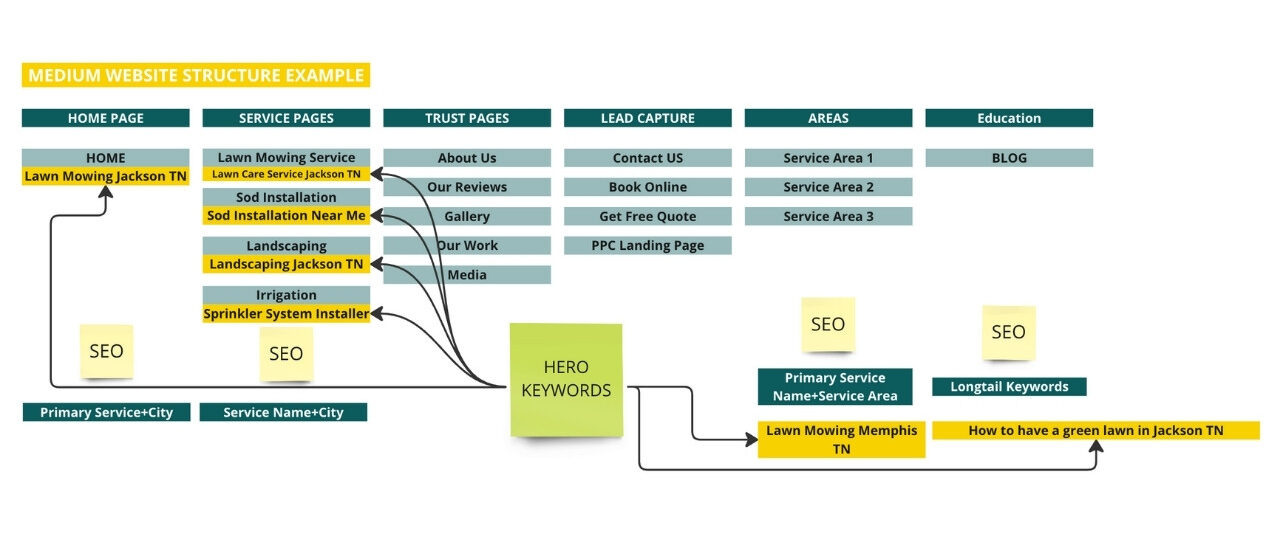
This may seem incredibly basic, but you’d be amazed at the number of professional digital marketers that don’t understand that Google doesn’t rank websites, it ranks PAGES of websites. Each page can be designated to target an individual keyword or keyword group.
You’re probably wondering, “How how do I choose these hero keywords?
Glad you asked :). Here’s a video to do just that.
You can follow the above guide and complete your own keyword research, or my team and I have mapped nearly EVERY major lawn/landscape keyword, so you don’t have to.

You can download that ^ here
Step 2: Add your Hero Keyword to four critical places on your page.
Google gives special weight to important parts of your pages. This is the foundation of onpage SEO. Google knows that for a page to be considered “about that keyword” it will include the keyword in primary places like the main heading or titles.
Hero Keyword is in the
- SEO Title (Or called Meta Title)
- H1 (Heading One Tag)
- Body Content
- URL
Here’s how you get this done.
A word of caution if you have an established site already:
URLS
If you have existing pages, edit the URLS with high caution unless you know how to redirect the URL properly. Every time you change the URL, you change the page that Google believes is ranking for that keyword, which can cause duplication issues and losing rankings overnight.
For Example, if you have a page.
www.johnslawncare.com/lawn-mowing, and you decide you want to change the URL to include the city
www.johnslawncare.com/lawn-mowing-tampa
Google will still be looking for the URL “www.johnslawncare.com/lawn-mowing” unless you 301 redirect it to the updated URL.
www.johnslawncare.com/lawn-mowing ->>301->> www.johnslawncare.com/lawn-mowing-Tampa
EXISTING RANKINGS
If your site currently has some high rankings for good, traffic-producing keywords, then making these edits can cause those keywords to shift or drop in ranking.
For example, let’s say you originally set up your website to rank for the keyword “Lawn cutting Jackson” and, through keyword research, found out that “Lawn Mowing Jackson” has three times the search volume.
Step 3: Add Frequently Asked Questions to your service & SEO pages.
There are (at least) three great reasons to include Frequently asked questions on your SEO pages.
- Google is moving steadily towards user signals as a primary ranking signal for your content. Just like social media algorithms, they want to reward users with content they stay on and interact with. FAQs provide answers and allow users to spend more time on the page as they investigate your content.
- FAQs are an amazing place to fill in keyword density. For example, “How much do our Jefferson City mowing services cost?” Boom, hero keyword & primary city have been included.
- AI and Rich snippet search results can grab these questions and answers word for word and recommend your site when a local searcher ask’s google this question.
Here’s how to do this.
Step 4: Get more Lawn Care Backlinks ASAP
A backlink is any other website on the internet that links to yours. These have been cornerstones of Google’s algorithm since the 90s, and it’s one of the most overlooked and misunderstood parts of ranking for nonprofessionals.
It’s the hidden reason why your competitors are outranking you.
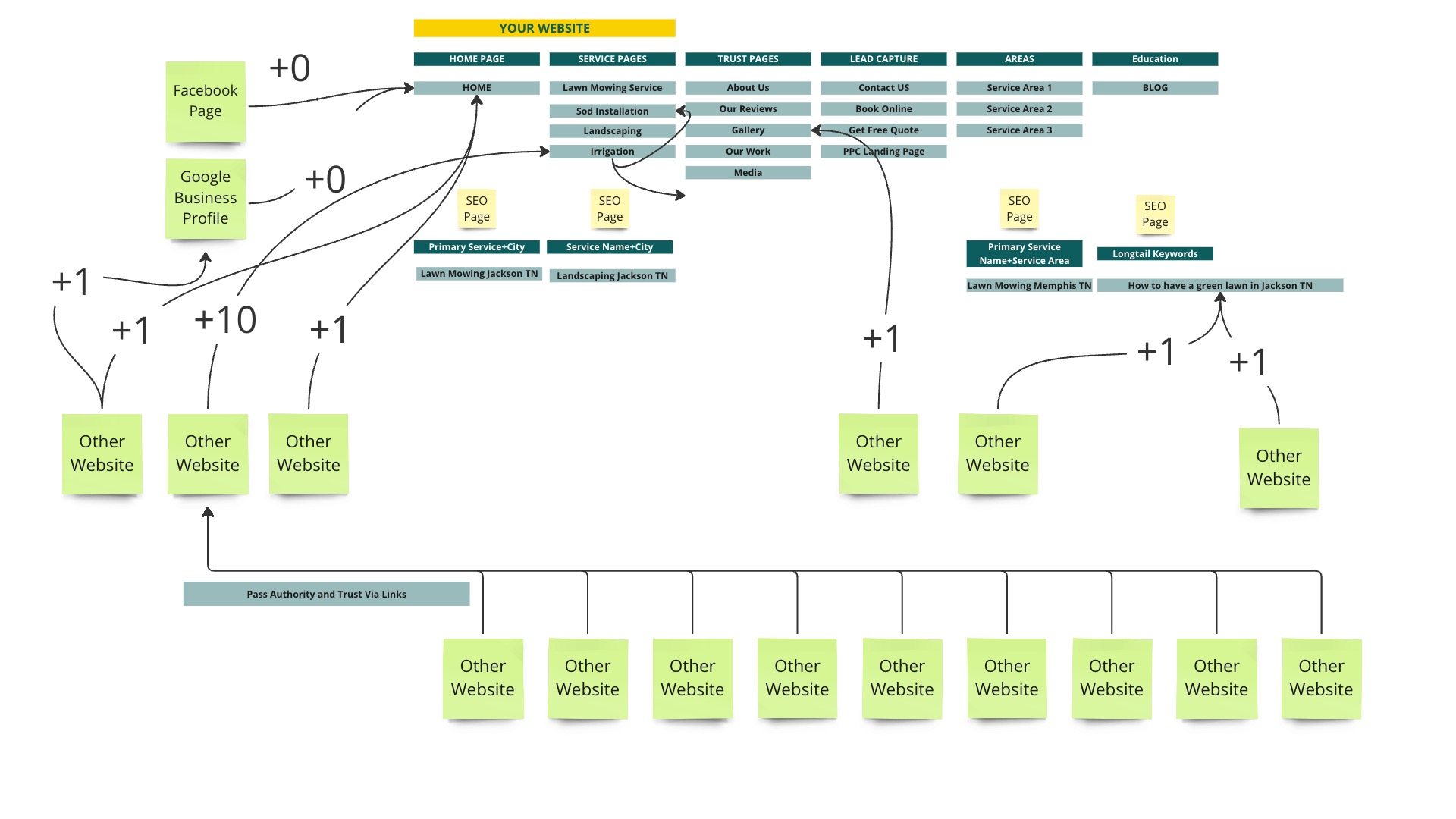
Google tracks the backlinks of every website in its index. It can show exactly how many other websites have been linked to yours. We can access this data through Google Search Console and third-party tools like Ahrefs.

There is a TON of info about backlinks on the internet if you want to look more into it, I’d recommend it.
For this guide, we’re just going to give you some truth that you can stand on so you can take action.
Lawn Care/Landscaping Backlink Truths in 2024
-
- More is better. In almost all practical cases, having more backlinks is better. The only exceptions are if you are getting spammy or very low-quality links from bad places.
- Relevance matters. So, getting a link from another lawn care-related website is worth much more than a link from a site that sells backpacks. In addition, we believe the geographical relevance can matter as well. So, getting a link from a backpack store in the same town as your lawn care company is a safe relevance to get. (I.E., If you have a friend with a nonlandscape website that has clear location relevance to yours – you should try to get that link.)
- Not all links are created equal. If you get a link from a website like https://www.landscapeprofessionals.org/, which has 79,000 backlinks, it will give more ranking value to your site than a link from https://www.pinellaspremium.com, which only has 19, when you can, get links from bigger, popular websites.
- Cross-linking is ok on a small scale, but one-way links are better. If you have some friends who want to trade links with your site – you should go for it 98% of the time. So you link to them, and they link to yours. For everyday individuals, this represents some of the most attainable links around. Call up your handyman buddy and ask him if he can put a link on his website to yours, and you’ll add one to his. However, it’s technically more powerful if he links to you. But there’s usually a smaller pool of individuals that you can call and ask, “Hey, link to me.” But it’s usually better to offer value in return.
Here’s how to do this.
- Sign up for all of your local or landscape-specific memberships.
- Chamber of Commerce
- Local Networking Groups
- National Association of Landscape Professionals
- Reach out to friends and family
- Reach out to other lawn/landscape business owners
- Reach out to a podcast to see if you can be a guest.
- (Most will link to you as part of their promotion of the show)
- Sponsor local events that will list your business on their website.
Step 5: Use internal links to amp up your best SEO pages
Add internal links that point to your most important SEO pages.
Internal links are like backlinks between your website pages. They send relevance and ranking value between pages in much the same way that backlinks send ranking value between websites.
Here’s how to do this.
That’s a wrap folks.
What’s next? It’s critical that you take action.
Find your hero keywords, or download our research.
Get into your site and complete at least a few “Direct to SEO” actions. Meaning you actually change something on your site that improves your SEO. Like what we just went over, this could be simple steps like inserting your hero keywords to your page, adding a FAQ section, and beef up your links.
Remember, the key is to take action, and to take action now. Reach out if you need help!


